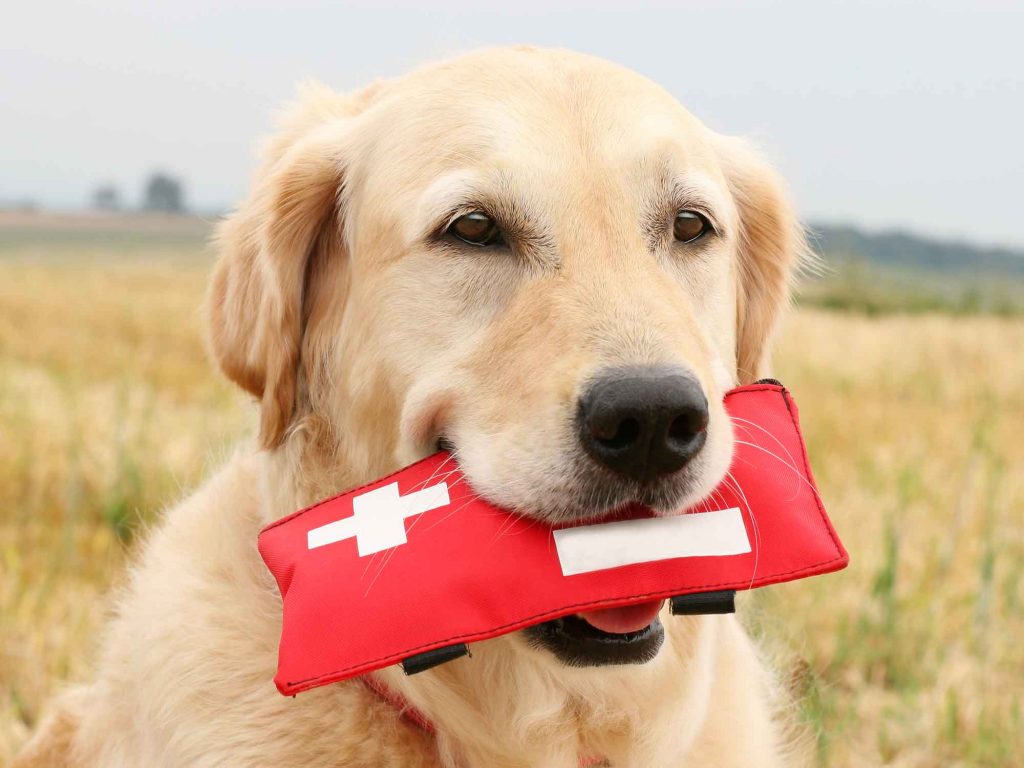To the Rescue: Putting Together a Pet First Aid Kit
 Ensuring you have a comprehensive pet first aid kit and the knowledge to employ it is crucial for pet owners in emergency readiness. Our furry friends rely on us for their well-being. Yet, many of us overlook preparing for unforeseen circumstances, such as being equipped to handle pet injuries.
Ensuring you have a comprehensive pet first aid kit and the knowledge to employ it is crucial for pet owners in emergency readiness. Our furry friends rely on us for their well-being. Yet, many of us overlook preparing for unforeseen circumstances, such as being equipped to handle pet injuries.
At Lone Tree Veterinary Medical Center, we believe that having a well-stocked pet first aid kit, and knowing how to use it, is an essential part of emergency preparedness for any pet owner.
Creating a Pet First Aid Kit
We recommend that pet owners carry a pet first aid kit in their car and also keep one in an easily accessible location in the home. Pet first aid kits can be purchased ready-made from pet supply stores or online (here’s one we like) or you can make your own from scratch.
If you choose to make your own, begin with a sturdy container, such as a tackle box or large insulated lunch box, and fill it with the following essentials:
- Important numbers – This should include Lone Tree Veterinary Medical Center’s number, the Pet Poison Hotline number, and an emergency contact in case you aren’t home. Program all the numbers into your phone as well.
- Instructions – Download and print out PDFs from the American Red Cross website on what to do in a pet emergency and keep them in your kit, and be sure to add their First Aid App to your phone for step-by-step instructions.
- The basics – Fill your kit with the basics: absorbent gauze pads or a 2-inch wide gauze roll, hypoallergenic adhesive tape, elastic cling bandage, cotton balls, cotton swabs, blunt scissors, tweezers, antibiotic ointment, antiseptic towelettes, styptic powder, an instant cold pack, and a compact emergency blanket.
- Supplies – Keep your pet’s leash, carrier, medical records, medications, and muzzle (if needed) in a convenient location near your first aid kit.
- Other items – Additional items you may want to include are a clean towel, cloth strips, disposable gloves, bottled water for drinking and washing, saline solution, and tongue depressors (for making a splint).
Keep Calm and Carry On
Remaining calm and rational is the best way to help your pet in an emergency. Before rushing to help your pet, take a quick assessment of the scene. Look for potential dangers, such as oncoming vehicles or other aggressive animals. Be aware that your pet may attempt to bite you out of pain or fear, so take the necessary precautions, then:
- Remove your pet, and yourself, from danger.
- In the event of a dog fight, get help to separate the dogs and keep your hands and face out of the fight.
- Stabilize your pet’s wounds before moving him or her, if possible.
- Keep your pet warm to prevent shock, but take care that he or she doesn’t become overheated.
- Transport your pet as soon as possible to our facility or the nearest emergency veterinary facility. We recommend that you call ahead and alert the staff that you are coming, so they will be ready for your pet’s arrival.
Pet First Aid at Lone Tree Veterinary Medical Center
Empowering our clients to care for their pets is important to us. This includes being prepared in the event of a pet emergency. Because of this, we provide a pet first aid component by one of our veterinarians or veterinary technicians in our Canine Academy’s puppy and basic level training classes. Don’t hesitate to give us a call if you would like more information.



